RE-MEMBERING EXPERIENCES
The historic emphasis on seeing as the primary sensorial activity in architecture leads us away from its bodies. This results in an architectural model which is not only experientially imbalanced but in danger of being restrictive and exclusive, such as a small house with a large picture window and practically no centerplace. An emphasis on the outer-directed senses encourages the notion that the outside world is bigger than the inside world, a notion which is quantitatively correct but experientially incorrect, especially when we consider that all sensory activity is accompanied by a bodily reaction. The personal world of the body is a redoubt, a place to turn toward. If it is suppressed or emptied of meaning and memory in architecture, how can it react effectively to external stimuli? How can it provide an alternative to excessive and disorienting events in the environment? To diminish the importance of the body’s internal values is to diminish our opportunity to make responses that remind us of our personal identity, responses we may have had as children when we were exploring house or exploring the outdoors.
Kent C Bloomer & Charles W Moore
Memories at the Center; Body, Memory and Community
Body, Memory and Architecture
INTENT
As we proceed into the second module of the studio, we move our focus from single or simple spaces to the inter-relations and configurations of a cluster of spaces. We will remember our experiences from a time when we were around 9 or 10 years old – in thought or through conversations, photographs and artefacts – and also speculate over the possible experience of that which is distant – from drawings, photographs and text. Although complexity is brought about by numbers of phenomena and their interrelationships, we need to bear in mind that we can only pay attention to one thing at a time. The ensuing process then implies the sequencing, proportioning and iterations of our attention.
TEACHING-LEARNING STRATEGIES
There are two collage exercises scheduled within the week and both intuitive (i.e. dependent on an individual’s representation of feelings, memories, associations & imagination). However, the expression and bringing together of the various intuitive parts will require structure & sequencing and hierarchy & editing, which demand some analytical moderation of the processes.
The process will be interspersed with conversations with tutors and peers and iterations of the work as per feedback and insights.
The brief will be closed in the Peer Review on the Monday following the scheduled week.
Regular update of the Reflective Blog is a mandatory requirement of the studio. You may choose to blog daily or weekly or with respect to briefs or exercises; however, stick to a chosen schedule for at least 4 weeks or through a module.
Reference outputs shared in the brief are only suggestive.
DELIVERABLES
1. My Neighborhood
Format: A3; Medium: Multimedia Collage or Monochromatic Drawing
Create a cognitive map – where the dimensions and representation are associational and not actual – of a most fondly or intensely remembered neighborhood from your childhood.
Include as diverse a range of spaces (houses, streets, shops, open spaces etc.) and emotions as you possibly can.
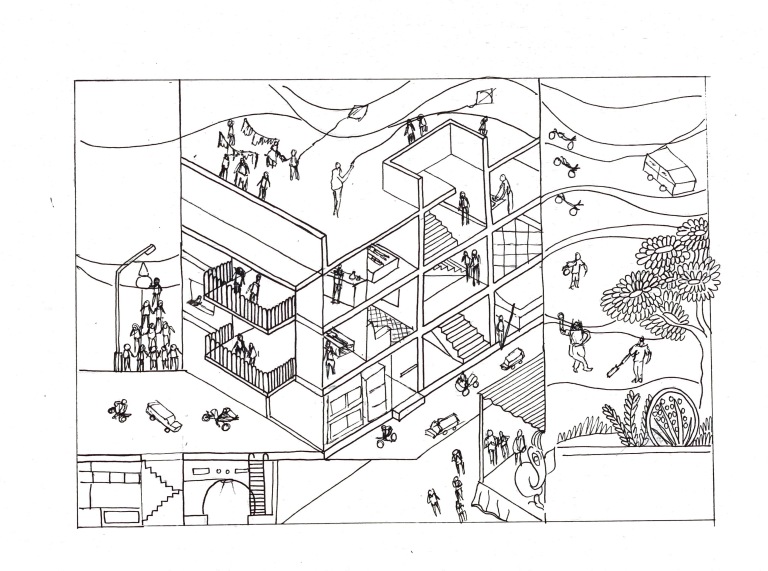
Mahek 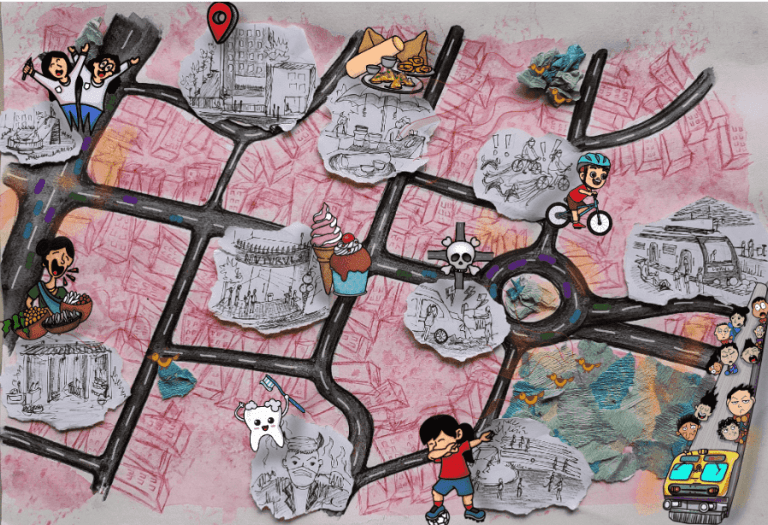
Simran
2: Home of My Memories
Format: A3; Medium: Multimedia Collage
Create a collage of your childhood home – where the dimensions and representation are associational and not actual. Include as diverse a range of spaces and emotions as you possibly can in terms of your recollections of experiencing light & darkness, noise & silence, smell & association, rhythm & proportion, texture & gloss, warmth or coolness and so on.
The spaces need not only be rooms, but can also include terraces, verandahs, courtyards, backyards, garages etc. You can, for sure, include elements such as plinths & steps, staircases & landings, columns & windows and so on. Instead of individual spaces, the expression could also represent movement from one space to another or between many spaces.
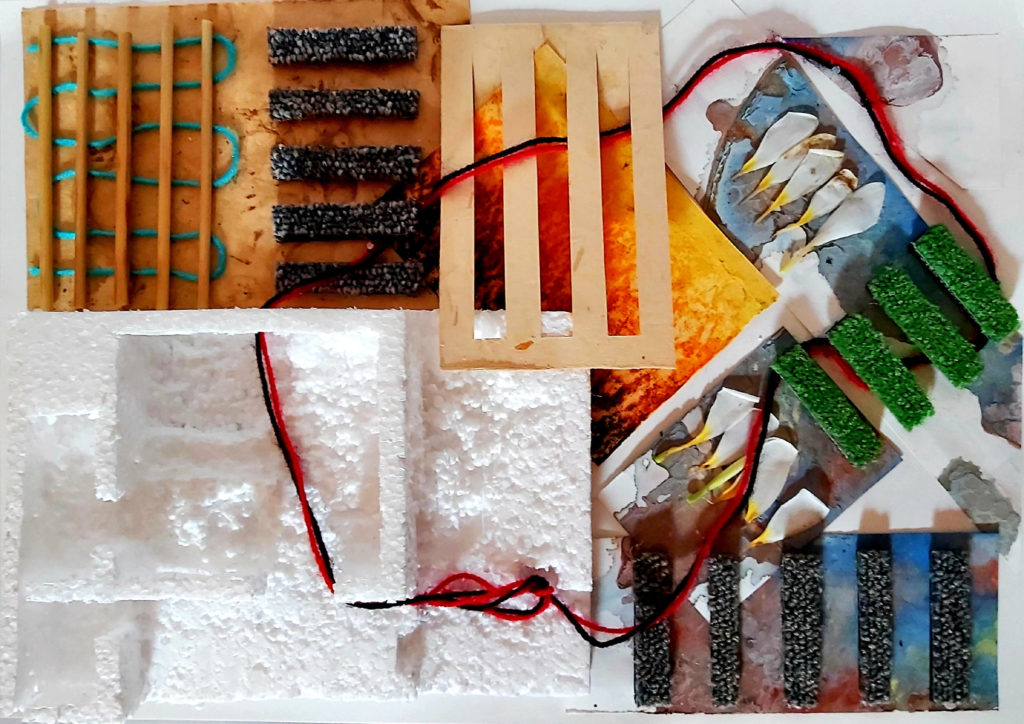
Aanchal 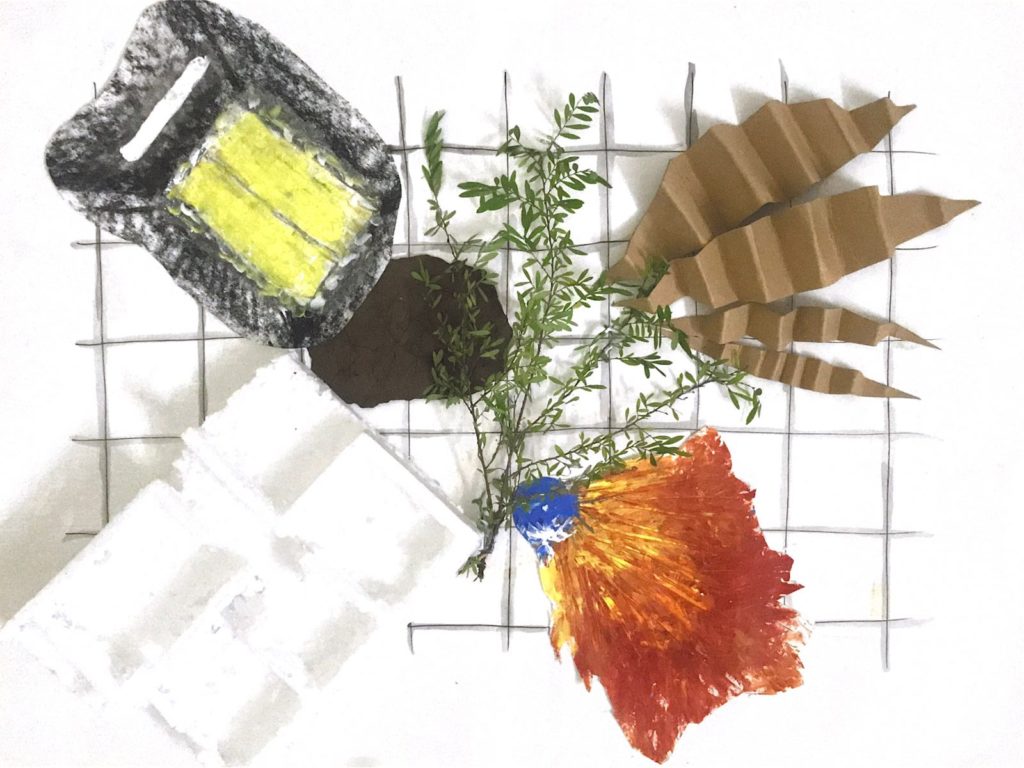
Nafela 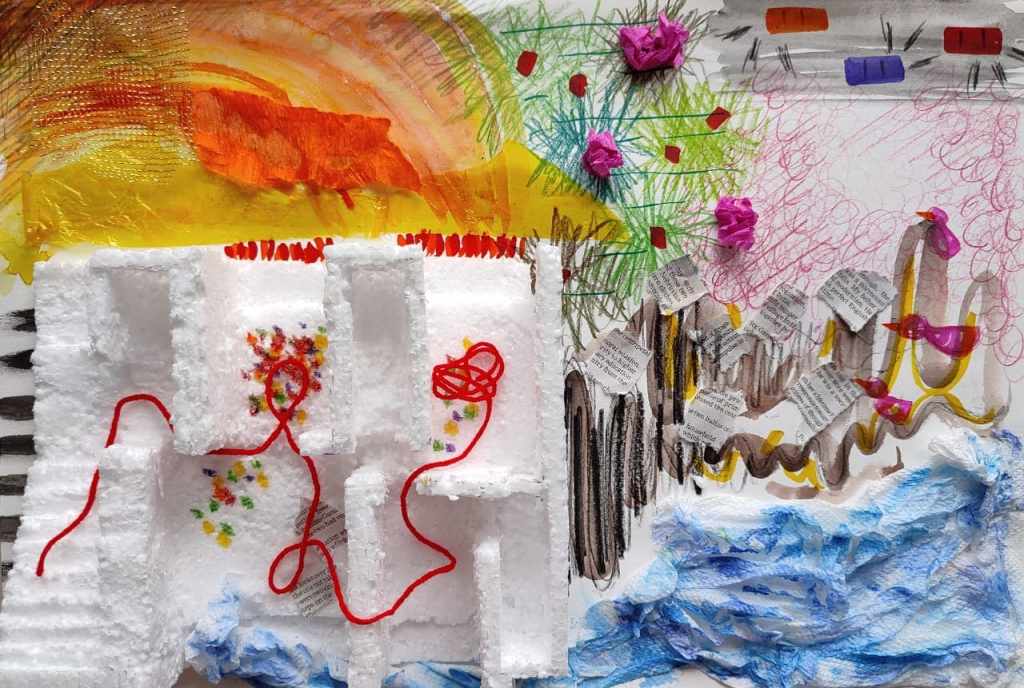
Simran 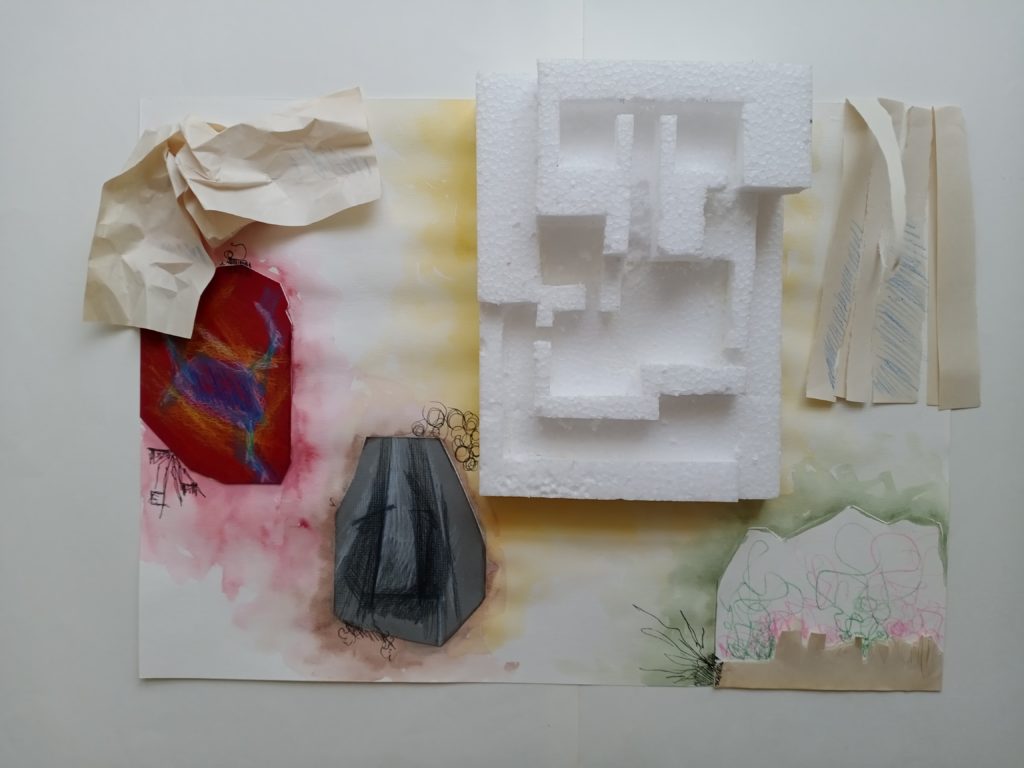
Parth
LEARNING OUTCOMES
The exercises defined in this brief are intended to elicit responses to the following questions:
- How is the creative process informed by experiences and memories?
- What is the relationship between body, memory, emotion and space?
- How do we inhabit a space?
Besides documenting the processes and recording its highs & lows, it’s necessary to reflect on these aspects and note the consequent deliberations in the Studio Blog.

 malkum
malkum